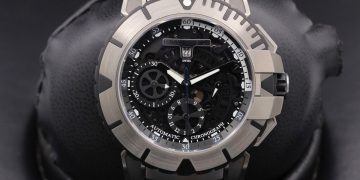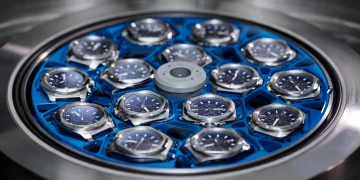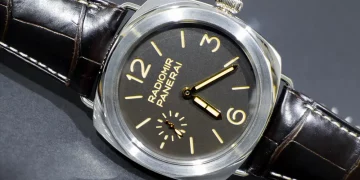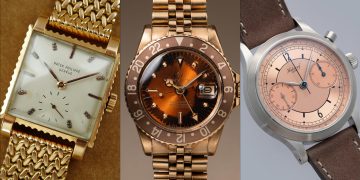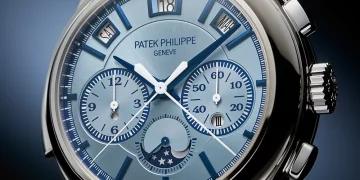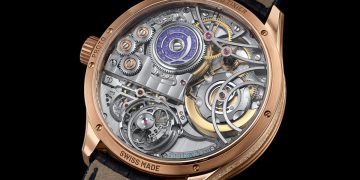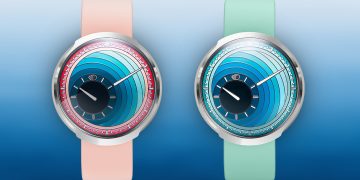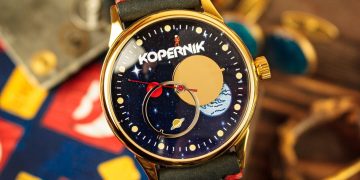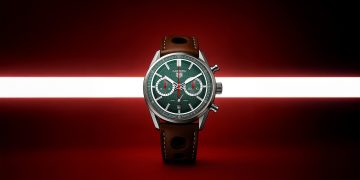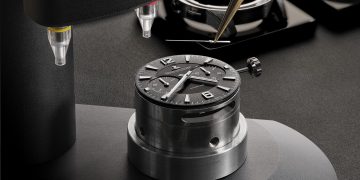Introduction: The Overlooked Genius of Watches
In today’s world, smartphones are considered the pinnacle of technology. These pocket-sized marvels seem to offer everything—communication, entertainment, productivity, and more—all in one sleek device. However, beneath the surface of modern technology, there exists an area of design and engineering that often gets overshadowed by the flashiness of the smartphone: the traditional watch.
Watches have evolved significantly over the centuries, from simple timekeeping devices to intricate marvels of engineering. Many modern luxury and high-end mechanical watches contain technologies that rival, and in some cases, surpass the capabilities of your smartphone. Watchmakers employ cutting-edge engineering, materials science, and innovative mechanics to create timepieces that aren’t just about telling time. They integrate complex functions, impressive durability, and astonishing precision that can put smartphones to shame.
In this article, we’ll delve into the hidden technology inside traditional watches, highlighting their advanced features, and comparing them to the gadgets we rely on today. You might be surprised to learn how watches have kept pace with modern technological advancements, proving that old-school craftsmanship is still highly relevant in today’s digital world.
The Precision Movement: An Engineering Marvel
Mechanical Movements: Masterpieces of Craftsmanship
At the heart of every mechanical watch is its movement—a finely crafted mechanism that drives the hands of the watch to measure time with astounding precision. Unlike digital or quartz watches, which rely on electronic circuits, mechanical watches use a complex system of gears, springs, and levers to keep time.
Mechanical movements are often considered more technologically advanced than quartz movements due to their complexity and the level of engineering involved. The most common types of mechanical movements are manual and automatic.
- Manual movements require the wearer to wind the watch to power the mainspring, which then drives the gears.
- Automatic movements, also known as self-winding movements, use the motion of the wearer’s wrist to wind the mainspring, providing power to the watch.
Despite the simplicity of their design, mechanical movements offer unparalleled precision. For instance, the Swiss-made movement, such as those produced by Patek Philippe, Audemars Piguet, or Rolex, is known for its accuracy, often running within fractions of a second per day. This precision is achieved through intricate design and craftsmanship, and it’s technology that has been refined over centuries.
In contrast, while smartphones utilize highly advanced digital technology, their internal systems are typically more prone to errors and battery life limitations, making traditional mechanical timepieces far more reliable in certain respects.
Tourbillons: The Pinnacle of Precision Engineering
One of the most extraordinary examples of mechanical innovation in traditional watches is the tourbillon. Invented by Abraham-Louis Breguet in 1795, the tourbillon is a complication that was designed to counteract the effects of gravity on a watch’s movement, which could cause inaccuracies when the watch was in certain positions.
In a traditional watch movement, gravity can cause uneven wear or slowing down of parts when the watch is kept in one position for extended periods. The tourbillon mechanism rotates the movement in a rotating cage, ensuring that the effects of gravity are evenly distributed, thereby increasing the watch’s accuracy.
The tourbillon has become a symbol of both technical prowess and luxury in watchmaking. High-end brands such as Jaeger-LeCoultre, Breguet, and Vacheron Constantin incorporate this complication into their timepieces. The technology and skill required to create a working tourbillon, often with multiple axes of rotation, places it among the most advanced and sought-after features in horology, far exceeding the simple time-telling function of a smartphone.
Advanced Materials: More Than Just a Watch Case
Titanium, Carbon Fiber, and Ceramics: The Future of Watchmaking
While smartphones are typically built using materials such as glass and aluminum, luxury watches are often crafted using far more advanced materials that are designed not only for aesthetics but also for strength, lightness, and corrosion resistance.
Titanium, for example, is commonly used in high-end watches due to its impressive strength-to-weight ratio. Titanium is lighter than stainless steel yet incredibly durable, making it ideal for sports or dive watches. Companies like Omega and Rolex have used titanium in their timepieces to offer comfort and resilience without sacrificing luxury.
Carbon fiber, a material often associated with the aerospace and automotive industries, is also making its way into luxury watches. Richard Mille, for instance, has created watches with cases made from aerospace-grade carbon fiber, which is highly resistant to scratching, extreme temperatures, and impact. These carbon fiber watches are lighter than traditional metal watches and are far more durable, providing a level of technology and innovation that smartphones can only dream of in terms of physical durability.
Ceramics have also made their mark in horology. Known for being scratch-resistant and corrosion-resistant, ceramics are now commonly used in both the cases and bezels of modern luxury watches. Brands like Rado and Rolex use ceramics to create sleek, durable, and visually stunning timepieces. The material’s impressive hardness is an example of watchmaking’s ability to utilize space-age technology to improve daily-use wearables.
Silicon Escapements: Cutting-Edge Engineering for Greater Accuracy
The advent of silicon in horology represents another leap forward in watchmaking. Traditional metallic components, such as escapements and balances, have long been a source of friction, leading to inaccuracy over time. However, silicon escapements are incredibly smooth, light, and resistant to magnetism, significantly improving the overall accuracy of the watch.
In fact, Omega‘s Co-Axial escapement system, which uses silicon components, has revolutionized the way watches are made, improving accuracy and longevity. This innovation rivals the sophistication of smartphone technology, particularly in its ability to reduce friction and extend the life of the mechanical movement.

Complications: Beyond Timekeeping
The World of Watch Complications
One of the most fascinating aspects of traditional watches is the use of complications—features that go far beyond simple timekeeping. Modern watches can include everything from perpetual calendars, minute repeaters, chronographs, and moonphase indicators to more advanced complications such as world time, altimeters, and tourbillons.
For example, a minute repeater allows the watch to chime the time on demand. This function, often considered one of the most complicated in watchmaking, requires a mechanical system of hammers and gongs that produces the sound of the hours, quarters, and minutes. This is something smartphones cannot replicate. In comparison, while smartphones can offer alarms and notifications, the mechanical sound of a minute repeater remains a much more personal, traditional, and luxurious experience.
The perpetual calendar, another example of a watch complication, takes into account leap years and the varying lengths of months, automatically adjusting the calendar display without requiring manual correction. This feature, often found in high-end mechanical watches from Patek Philippe and Audemars Piguet, is a marvel of engineering and astronomical knowledge, highlighting how traditional watchmaking surpasses smartphones when it comes to integrating complex, real-world knowledge into a functional timepiece.
Smartwatches vs. Mechanical Complications
While smartwatches can provide a vast array of functions—health tracking, notifications, GPS, and more—the complexity of traditional watch complications is something entirely different. Complications are deeply integrated into the mechanical workings of the watch, making them unique to the craft of horology. Many smartwatches may mimic certain functions, such as heart rate monitoring or altimeter tracking, but they still cannot match the timeless elegance and engineering excellence of mechanical complications.
Moreover, smartwatches rely on batteries and require recharging, while mechanical watches can run indefinitely with minimal intervention, relying solely on the mechanical energy provided by the wearer. This long-term durability and functionality are a testament to the advanced technology embedded within traditional timepieces, which can sometimes surpass even the latest smartphone models in terms of longevity and craftsmanship.
The Future of Traditional Watches: Bridging the Gap
Merging Innovation with Tradition
In the ever-changing world of technology, watchmakers continue to push the boundaries of innovation while staying true to their heritage. While the advent of smartwatches has introduced new features and functionality, traditional watchmakers are continuously incorporating new technologies and materials to create more advanced, accurate, and durable timepieces. For example, some luxury watch brands are even integrating smart technology into their mechanical watches, creating a fusion of old-world craftsmanship and modern innovation.
Beyond Timekeeping: What’s Next?
The future of horology is one of continued innovation, where watchmakers will likely incorporate AI, sensors, and advanced connectivity into their timepieces while still maintaining the soul of traditional watchmaking. Watches of the future could include features like self-winding mechanisms powered by energy harvesting or integrated communication systems that enhance the experience without compromising the fundamental beauty of mechanical timekeeping.
Conclusion: The Timeless Beauty of Advanced Technology
Traditional watches are
often overlooked in favor of the more flashy, rapidly evolving world of smartphones and smartwatches. However, beneath their elegant exteriors lies a vast array of advanced technology, from intricate mechanical movements to the use of space-age materials and precision components that rival, and in many cases surpass, the technological feats achieved by our smartphones.
While smartphones are designed for versatility and multifunctionality, traditional watches offer something deeper: a perfect balance of art, science, and innovation that has been refined over centuries. The next time you look at your wrist, take a moment to appreciate the incredible hidden technology inside, and remember that your watch may just be more advanced than your smartphone in ways you never imagined.



